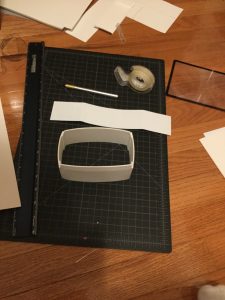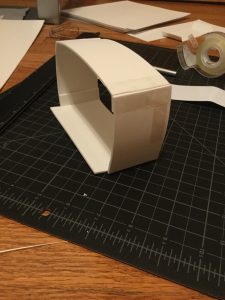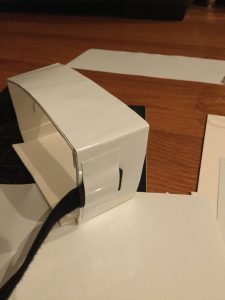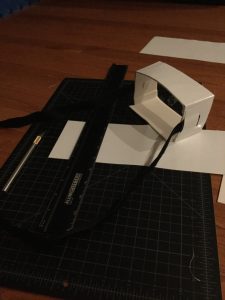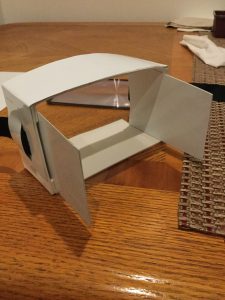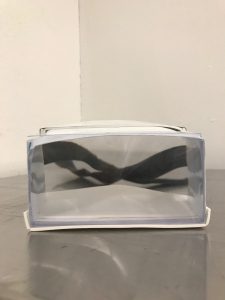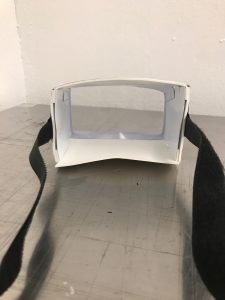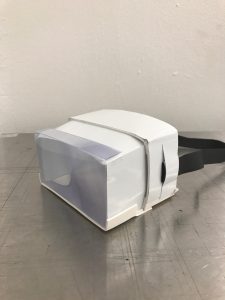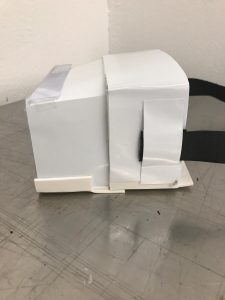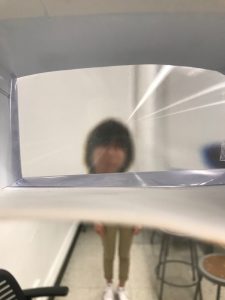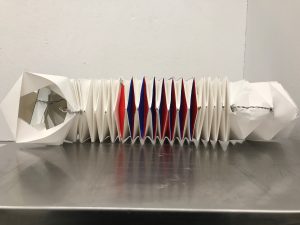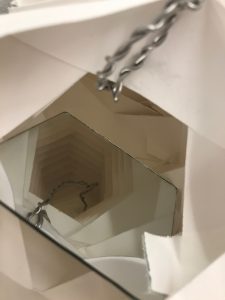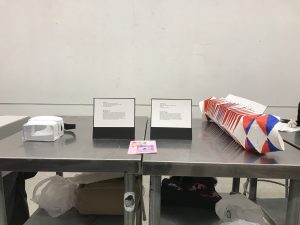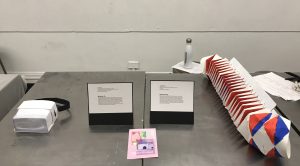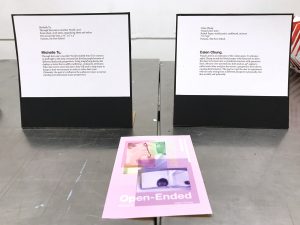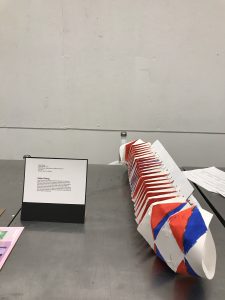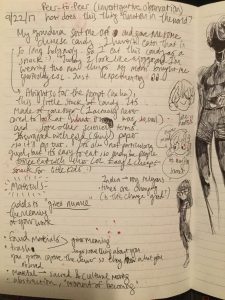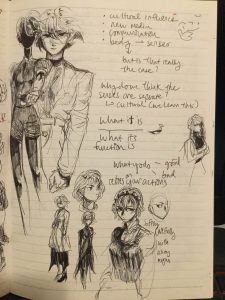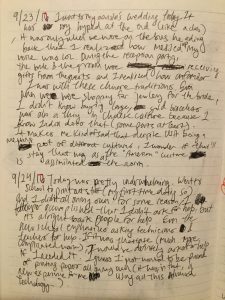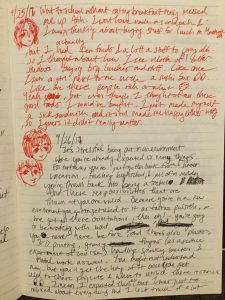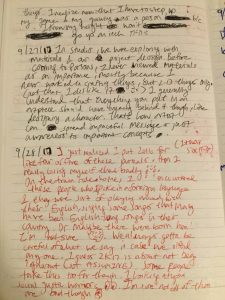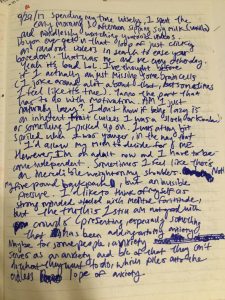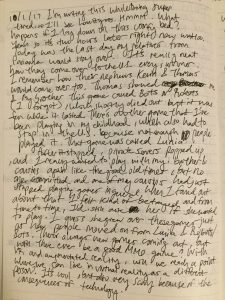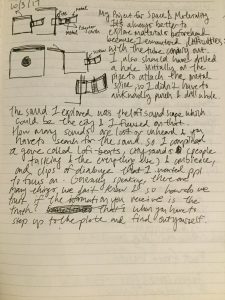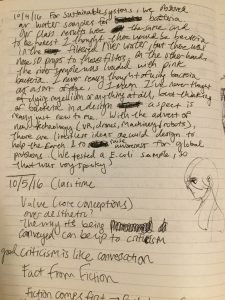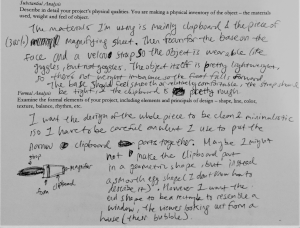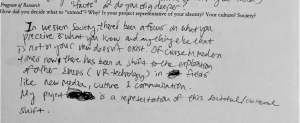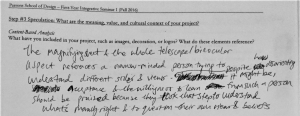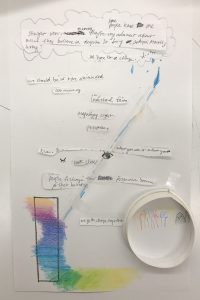Progress photos
So when I first made the base of the eyewear, I realized an extra slip of foam sheet against the face would be useful, so I remade the box and added a layer of vinyl. This process involved a lot, and I mean A LOT, of slicing.
Attaching the velcro straps with tape and a supportive layer of vinyl sheet.
Preparing the side pieces in order to attach the magnifying sheet.
Calen’s, my partner for this Bridge, in progress body extension. It’s almost like an elephant trunk. You have to look at the mirror on bottom end while holding this straight up in order to see the mirror on the top, showing you the view outside of the tunnel.
This is our exhibition setup
On Calen’s final piece, she added cardboard supports so the trunk wouldn’t be so wobbly.
Eleven Integrative Journal Entries (Wow!!) I tried to spice it up a bit, but writing when you’re super tired really gets you into weird headspaces//
My project has come a long way after originally writing what I would use for constructing the body extension. I had planned to use chipboard-
, but I ended up using foam sheet and vinyl sheet (actually I ended up using lots of sheet related things, which shows how I preferred flexibility and malleability of materials).
My earlier prototype design is pretty similar, only tweaking how the straps were fastened on rather than making a little hole and tying a knot so the strap wouldn’t be able to fall out (similar to goggles). But as I explored with materials, the way I built the body extension began to change because I wanted a cleaner minimalistic design, I bought white sheets instead of my original idea which called for black material in order to create contrast. I wanted my piece to look more futuristic because of Virtual Reality technology, which is what I began to replicate in some way. In the first place, I imagined the design to look almost like a pair of binoculars.
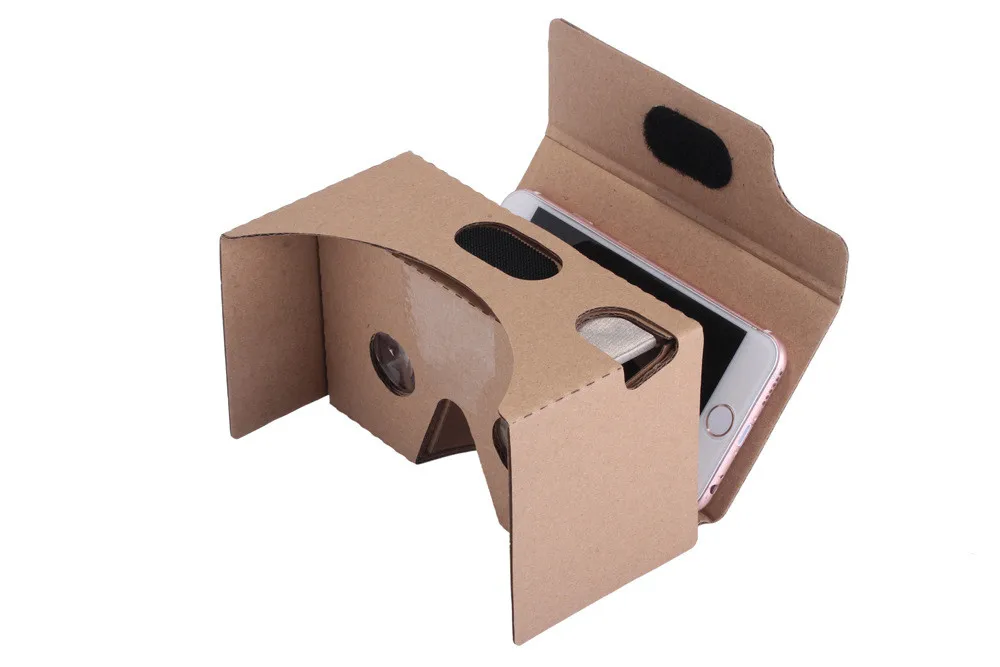
From the readings of this class and of my Space/Materiality class, I’ve learned that western society has a huge emphasis on visuals and what we see and how we describe things in the concept of time because, in some civilizations, time doesn’t exist in their culture. But times are changing again and there’s a shift to include other senses. Something like augmented reality may seem like it’d only rely on sight, but with the advent of new media technologies, that is also bound to change. My partner and I used this and connected this to the fact that there are people who see things or read news while scrolling down their feed and that’s all there is to it. They may only take in news from one source (which is most likely unreliable) and use that to dictate their knowledge. Basically what they see is what they know.
“However, communication is a multisensory experience, including not only the ears and eyes but all sensory apparati (Porcello, et al., 2010, p. 60). What helped my understanding of what the role of non-visual communication could be was the addition of technology, or at least it piqued my interest especially the virtual reality section. When I first experienced VR, the movement controls were really wonky. Some games would have the player teleport from one spot to another with a cursor on a screen connected to one of their hand controllers. Now more technologically advanced VR games allow the player to move by just motioning their hands the same way they’d walk in real life. You’d think that playing VR games would require only visual attention like normal video games (besides the use body motions when using a keyboard or mouse), but because of the connotation of “virtual” many of your senses, smell excluded (perhaps in the future this may be implemented somehow, but currently there is haptic research relating to binding touch and kinesthetics into encounters with images (p. 58)) , will be used. Media theorists also recognize the potential that new media technologies carry to destabilize presumptions of ocularcentrism, as modes of interaction with media increasingly rely on body, voice, hand, or other body-and-sense interfaces (Hansen 2006). I don’t believe there are solely non-visual mediums, but the future of VR shows how the other senses can be conjoined with visual presentation.”
– Week 4 Reading Response
(Curatorial Statement and Artist Labels)
Calen and I tried spicing up our curatorial statement (fun assignment for Integrative Seminar in order to liven things up!)
Working together with something to create a whole exhibition was an enjoyable experience. If this was my only art class, I would have definitely planned out with my partner more to a create a more exhilarating experience for the audience, but I wouldn’t say this experience was useless It’s always fun building new stuff (especially things I’ve never done before, even though it’s extremely stressful juggling other classes) and seeing how far I can push myself and what can I make besides doodling on sketchbooks. But for the most part, I think I was just excited doing something almost game design related instead of all these foundation courses (cries, but not really because all experiences are valuable). For the next project, we’ll be working in groups of four, so I wonder how that’s going to go (laughs nervously). I hope our communication will be on point.
